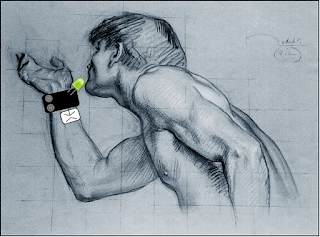Wearable Polygraph Update

This post is an update on the Wearable Polygraph project that I undertook as part of the Wearable Technologies class at CU Boulder. Naturally this post will build on multiple previous posts in the wearables thread on this blog so if you are looking for some context be sure to check out Fantasy Wearables and Wearable Polygraph posts. Below I will cover the system design, integration, and shortcomings of the device and the interface for this v0.0.1 release. I would like to note up front that the project is not entirely functional and I came up short on many goals, but the system design that I have developed up to this point is solidifying and the different choke-points have brought up interesting new questions that are prudent to document with the current context of this project. Reading forward you can expect to find documentation on the current state of the device and the interface that I have developed as well as discussion on an interesting future wearables project using t...


